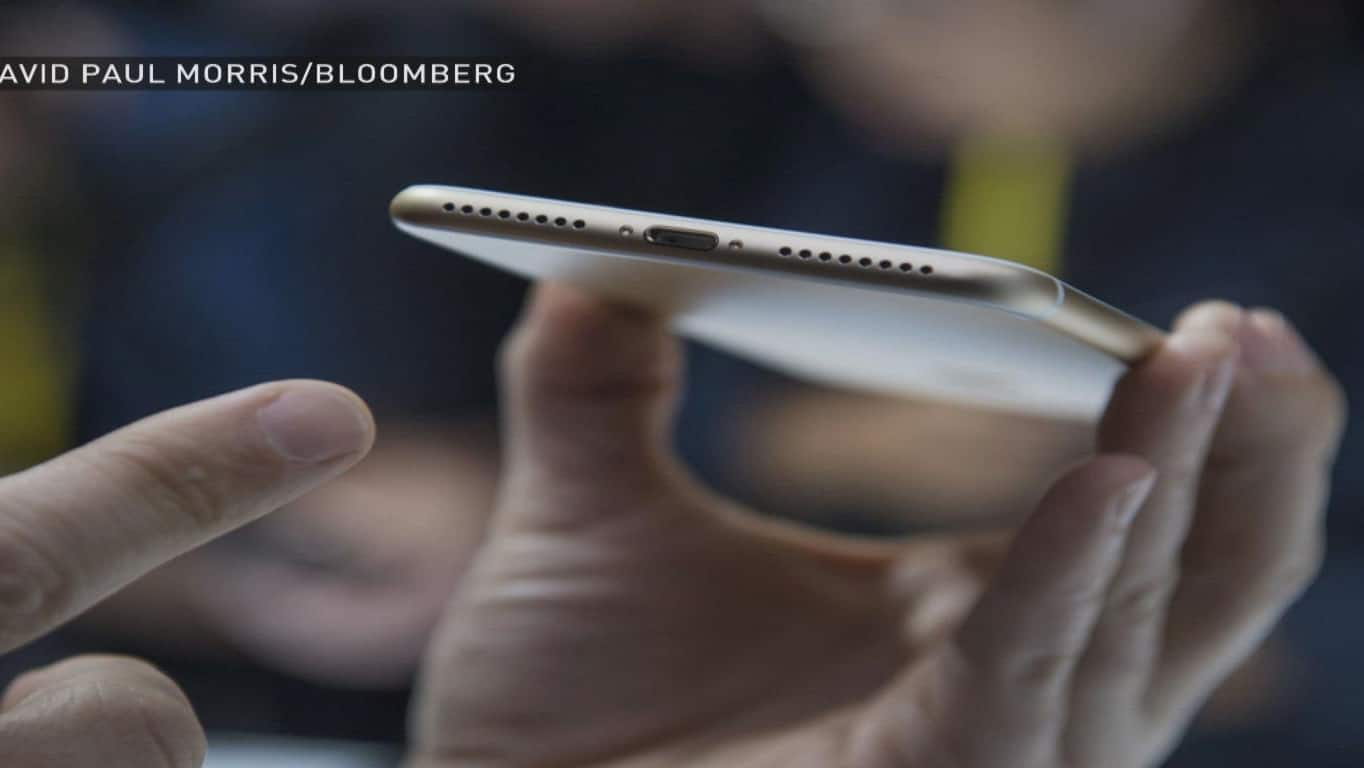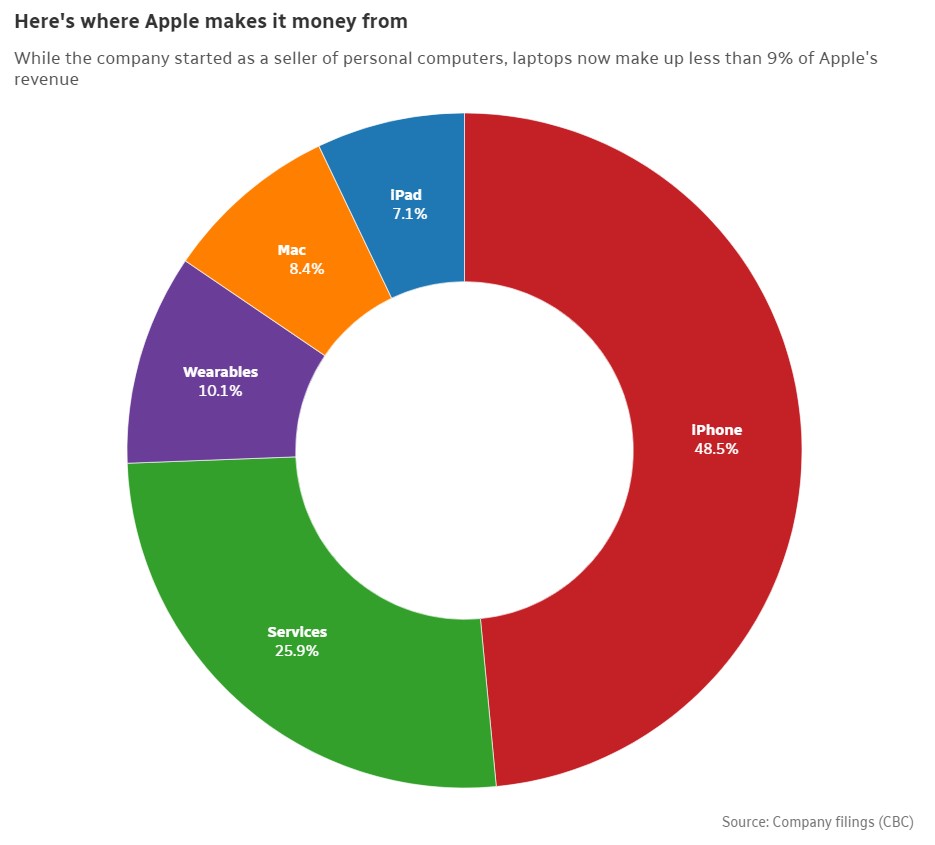Move is a response to recent EU legislation that mandates USB charging for all devices by next year.

Apple showed off its latest iterations in its product lineup on Tuesday, and while there were plenty of fancy new features for the company’s legions of power users to gush over, the biggest change is a simple one: They’re switching to USB charging.
The California-based technology giant is hosting an event at its Cupertino headquarters on Tuesday, where it unveiled new features for its smartwatches and phones.
The iconic iPhone — sales of which make up almost half of the $3-trillion company’s total sales — got a makeover, as expected, that will improve battery life, upgrade the camera and make it more environmentally friendly, with recycled components.
But the development that’s generating a lot of the attention is the addition of a USB-C port to the iconic device for the first time ever.
While much of the consumer technology world has slowly but surely moved over to USB technology for charging and other connections, Apple has been the biggest holdout, preferring to use its own connectors and wires for its devices.
For years, the company’s handheld devices used its proprietary 30-pin dock connector, which was upgraded to the also Apple-specific Lightning port as of 2012. While some Apple products have had USB-C ports since as long ago as 2015, the iPhone did not — which is why Tuesday’s move represents a significant change.
Apple likes to trumpet itself as an innovator that leads the way for other technology rivals to follow. But on this issue, it’s been a laggard and was forced to get with the times only because European lawmakers have mandated that all portable tech devices sold on the continent must have USB charging by the end of next year.
Instead of rolling out a version of the device solely for the European market, the company is making the USB-C port standard across all its smartphones worldwide from now on.

Do you want one-size-fits-all phone chargers?
On the streets of Toronto, consumers shared their thoughts with CBC News about the European Union’s move to force tech companies like Apple to all use the same type of charging ports on their handheld devices.
Users say the move is long overdue.
Catherine Warren, a media and technology entrepreneur who is also CEO of Edmonton’s municipal innovation authority, Edmonton Unlimited, says all of her devices are Apple, so as someone who travels a lot, she is very excited by the prospect of not having to fly with a fistful of different cables.
“From my point of view, anything standard is good,” she told CBC News in an interview. “One of the biggest challenges with Apple products is … in their desire to be design-oriented, they have taken away consumer accessibility.
“This is a very positive small step toward compatibility that we are all after as consumers.”
Gay Gordon-Byrne, the executive director of consumer lobby group the Right to Repair Foundation, says while she welcomes the move, it’s important to remember that the company isn’t doing it out of the goodness of their heart.
“I think it’s a wonderful piece of work on the part of the EU,” she said in an interview. “[Apple] wouldn’t have done it, not in a million years, if they weren’t forced to.
“My inner radar tells me they will try to make a bigger deal out of it than it is — just because anything that makes them look good, they’re happy to do.”

Alissa Centivany, an assistant professor at the faculty of information and media studies at Western University, says other jurisdictions around the world, including the U.S. and Canada, had been contemplating mandating a similar change, but the EU’s move made it unnecessary since Apple was most likely going to decide to standardize its devices across regions anyway.
Having multiple ports “really [doesn’t] serve any purpose, except for to make manufacturers more money, and they really harm consumers, in terms of affordability, and they harm all of us in terms of environmental sustainability,” she said in an interview.
“There’s no reason why Apple, and Android or Windows should have different adapters or different plugs.”
Sales slump
The move comes as the company is looking to boost interest with consumers, as its once untouchable pace of sales growth has slowed to a trickle amid a broader slowdown in the economy. The company is on track to see its revenue decline this year for the first time since 2019.
According to Anurag Rana, an analyst with Bloomberg Intelligence, the company sold 242 million iPhones last year. If it’s lucky, it will ship 225 million this year. So to maintain growth, the company will have to start doing what many companies have done in the current era of high inflation: charge more.

Apple launches iPhone 15 with a new charging port
Apple is changing its cell phone charging ports to comply with regulations in the European Union. The newly launched iPhone15 will use a USB-C port, like most of its competitors — and other Apple devices.
While prices for the base model of the iPhone 15 and iPhone 15 Plus are unchanged from last year, at $799 and $899, the price of the highest-end model, the iPhone 15 Pro Max, has increased by $100 US to $1199. Canadian pricing information has yet to be released.
“We expect consumers to trade up,” Rana said in a note to clients. “This could change the product mix of new smartphones sold next year, potentially driving high-single-digit iPhone sales even with a modest addition to unit shipments.”
ABOUT THE AUTHOR

Senior Business Writer
Pete Evans is the senior business writer for CBCNews.ca. Prior to coming to the CBC, his work has appeared in the Globe & Mail, the Financial Post, the Toronto Star, and Canadian Business Magazine. Twitter: @p_evans Email: pete.evans@cbc.ca
*****
Credit belongs to : www.cbc.ca
 Atin Ito First Filipino Community Newspaper in Ontario
Atin Ito First Filipino Community Newspaper in Ontario





